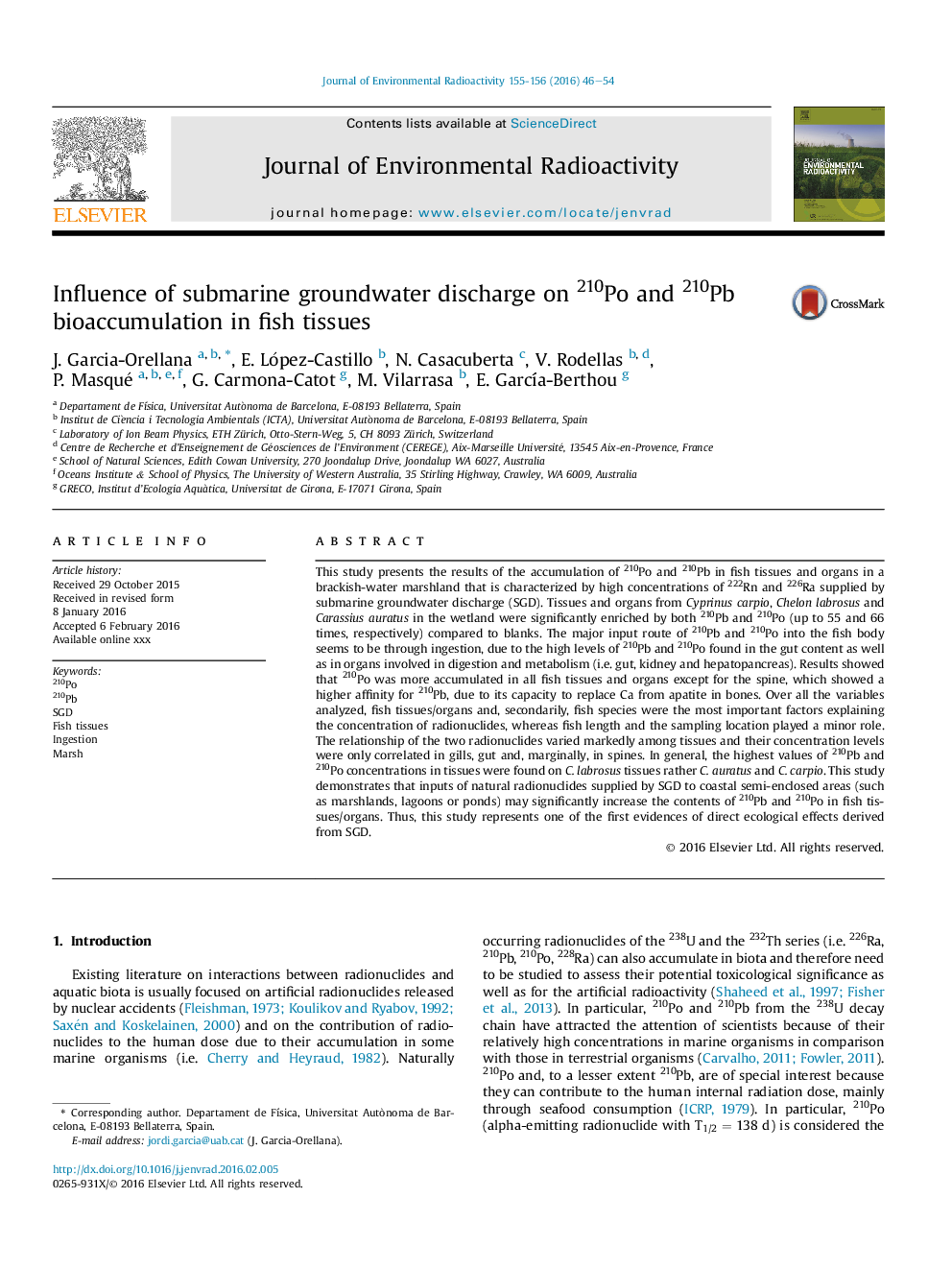| Article ID | Journal | Published Year | Pages | File Type |
|---|---|---|---|---|
| 8081932 | Journal of Environmental Radioactivity | 2016 | 9 Pages |
Abstract
This study presents the results of the accumulation of 210Po and 210Pb in fish tissues and organs in a brackish-water marshland that is characterized by high concentrations of 222Rn and 226Ra supplied by submarine groundwater discharge (SGD). Tissues and organs from Cyprinus carpio, Chelon labrosus and Carassius auratus in the wetland were significantly enriched by both 210Pb and 210Po (up to 55 and 66 times, respectively) compared to blanks. The major input route of 210Pb and 210Po into the fish body seems to be through ingestion, due to the high levels of 210Pb and 210Po found in the gut content as well as in organs involved in digestion and metabolism (i.e. gut, kidney and hepatopancreas). Results showed that 210Po was more accumulated in all fish tissues and organs except for the spine, which showed a higher affinity for 210Pb, due to its capacity to replace Ca from apatite in bones. Over all the variables analyzed, fish tissues/organs and, secondarily, fish species were the most important factors explaining the concentration of radionuclides, whereas fish length and the sampling location played a minor role. The relationship of the two radionuclides varied markedly among tissues and their concentration levels were only correlated in gills, gut and, marginally, in spines. In general, the highest values of 210Pb and 210Po concentrations in tissues were found on C. labrosus tissues rather C. auratus and C. carpio. This study demonstrates that inputs of natural radionuclides supplied by SGD to coastal semi-enclosed areas (such as marshlands, lagoons or ponds) may significantly increase the contents of 210Pb and 210Po in fish tissues/organs. Thus, this study represents one of the first evidences of direct ecological effects derived from SGD.
Related Topics
Physical Sciences and Engineering
Energy
Nuclear Energy and Engineering
Authors
J. Garcia-Orellana, E. López-Castillo, N. Casacuberta, V. Rodellas, P. Masqué, G. Carmona-Catot, M. Vilarrasa, E. GarcÃa-Berthou,
